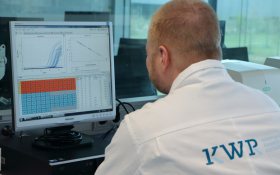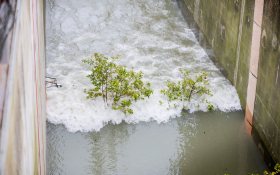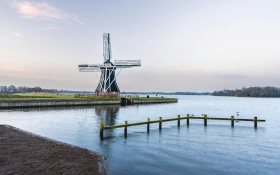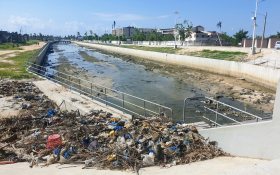Dutch-Australian team awaits spawning at Great Barrier Reef to rehabilitate coral
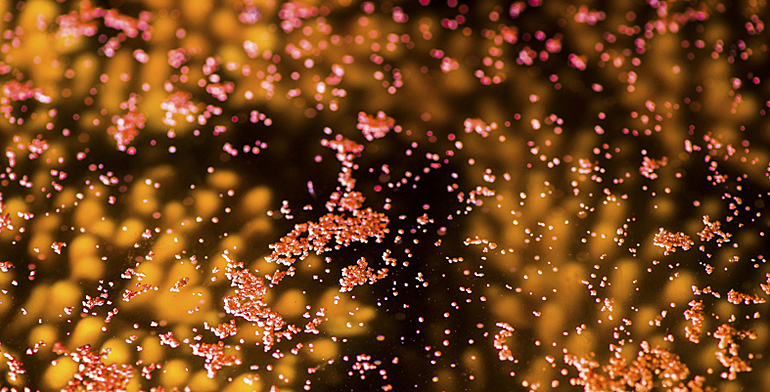
A team of researchers of Delft University of Technology (TU Delft), dredging firm Van Oord and Australia’s national science agency CSIRO travelled to healthy coral parts of the Great Barrier Reef, Australia for the large scale collection of coral eggs.
At some time following the full moon in November there is a single moment that all the coral releases eggs, the coral spawning. The researchers want to be there when the spawning takes place, to collect the floating clouds of eggs and bring them to places where the reef needs to grow.
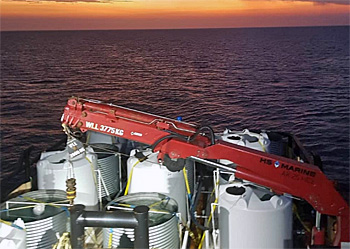 Ship with pumps and tanks on its way to the spawning area (TU Delft/Instagram).
Ship with pumps and tanks on its way to the spawning area (TU Delft/Instagram).
Fragile coral eggs
Working with coral larvae has been tried and tested on a small scale and in special tanks. The researchers will now be investigating on location whether this process can be upscaled by collecting the fragile coral eggs on a much larger scale, using adapted pumping installations that can be used on dredgers for example.
Aerial surveillance
Shortly after the spawning, the eggs float to the water surface where they accumulate depending on the current. The researchers locate these floating clouds of eggs from the air using a small aircraft.
"It's an exciting proces", says Professor Mark van Koningsveld from TU Delft, "because we then have to get to the eggs really quickly by boat, containing our pumping and research equipment, so we can do our tests; the next opportunity to test this process in the wild isn't for another 12 months, when the coral spawns again."
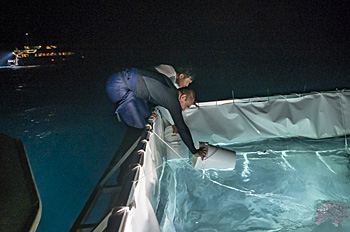 Manual collection during earlier transportation tests of coral eggs.Top photo shows spawning near Heron Island (both photos: Citizens of GBR/Gary Cranitch).
Manual collection during earlier transportation tests of coral eggs.Top photo shows spawning near Heron Island (both photos: Citizens of GBR/Gary Cranitch).
Optimise pump systems
It is important that the fragile eggs are still alive when they reach the storage tank. To make their journey as smooth and safe as possible, TU Delft’s and Van Oord’s researchers have spent the past few months optimising the pumping systems.
For example, the pump needs to cause no eddies during suction and has to stay floating on the surface of the water. Also, the type of pump turned out to play an important part in the design.
The researchers will be testing two types of pumps and two types of storage tanks in Australia.
During lab tests in the Netherlands, alternatives were used to mimic the structure of coral eggs as closely as possible, such as fish spawn, peas, blueberries and little balls of gel.
The research project is subsidised by the Australian and Queensland Governments and is part of the Advance Queensland SBIR initiative.
This news item was originally published on the website of Delft University of Technology.
Read also on this website
● Van Oord wins DPC Innovation award 2017 for its reclamation projects in the Maldives, 1 December 2017
● Research team uses specially-made GPS trackers to chart Irrawaddy river, Myanmar, 31 January 2017
● Expertise: Enabling delta life
● Country: Australia
More information
Delft University of Technology
Faculty Civil engineering/water resources
Delft, the Netherlands
+31 15 278 16 46
www.citg.tudelft.nl
Van Oord
Rotterdam, the Netherlands
+31 88 8260000
www.vanoord.com
Video of spawning of coral in a tank.
Test of underwater pump system with coloured balls of gel.
